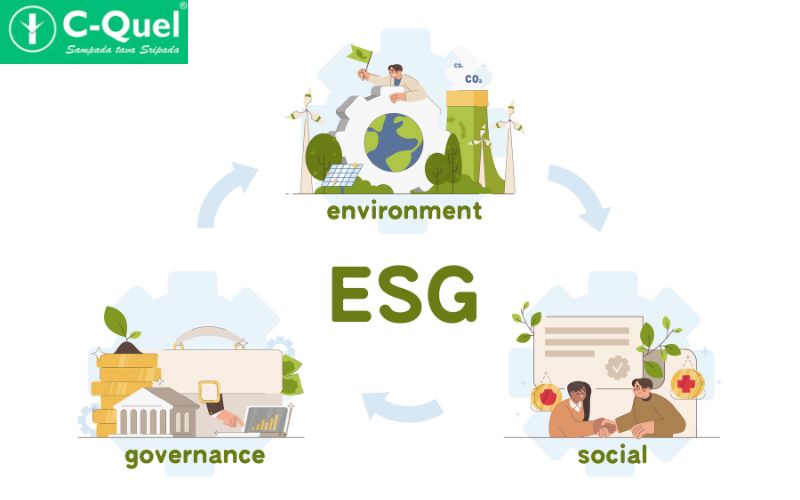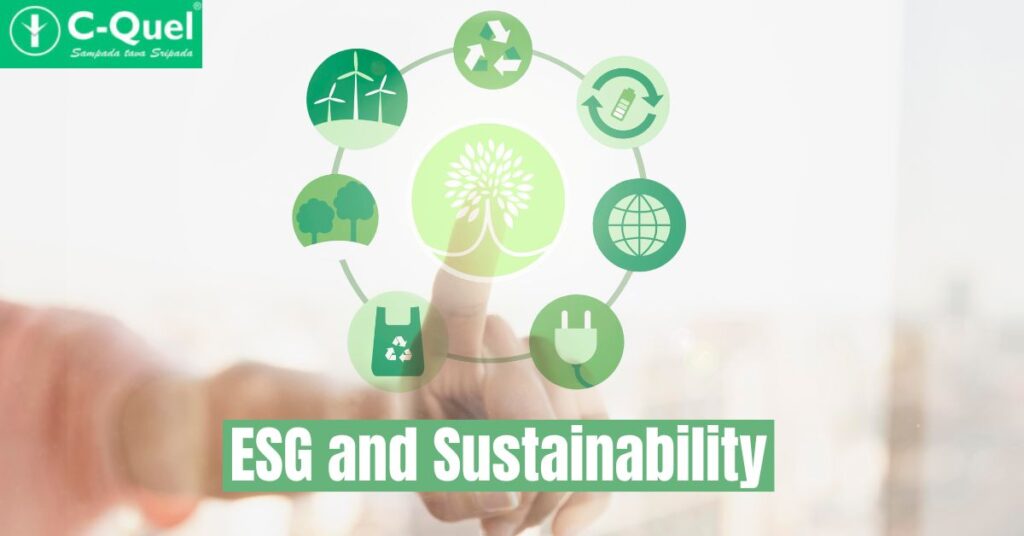In an era marked by growing environmental concerns, social disparities, and calls for ethical governance, the corporate world is undergoing a transformative shift. Companies are increasingly recognizing that the future of business lies in a harmonious blend of Environmental, Social, and Governance (ESG) principles with sustainability. These two concepts, often used interchangeably, are distinct yet deeply interrelated facets of responsible business practices.
In this comprehensive exploration, we will delve into what ESG means within the realm of sustainability, elucidate the differences between the two, provide real-world examples of ESG and sustainability in action, and underline the profound impact ESG can have on the sustainability landscape.
What Does ESG Mean in Sustainability?
ESG, an acronym for Environmental, Social, and Governance, represents a framework that businesses utilize to assess and communicate their performance in these three critical areas. Environmental factors encompass issues like carbon emissions, resource management, and climate change resilience. Social factors involve aspects such as employee welfare, diversity and inclusion, and community engagement. Governance focuses on corporate governance, ethics, and transparency.
In the context of sustainability, ESG serves as a crucial tool for measuring and improving a company’s sustainability performance. By aligning their ESG efforts with sustainability goals, organizations can ensure that they are not just profitable but also responsible stewards of the planet and society.
What is the Difference Between Sustainability and ESG?
While sustainability and ESG are closely related, they differ in their scope and purpose. Sustainability is the broader concept, encompassing all efforts aimed at ensuring the long-term well-being of the planet, society, and economy. Sustainability goals often include reducing environmental impact, promoting social equity, and fostering economic growth that benefits all stakeholders.
On the other hand, ESG is a subset of sustainability. It provides a specific framework for evaluating and disclosing a company’s performance in key areas that directly impact its sustainability. ESG metrics and reporting help stakeholders understand how a company manages its environmental, social, and governance risks and opportunities. In essence, ESG is a means to achieve sustainability goals.

ESG and Sustainability in Action: Real-World Examples
To better illustrate the concepts of ESG and sustainability, let’s explore some real-world examples of companies that have embraced these principles in their operations.
Environmental (E):-
- Tesla – Carbon Neutrality:– Tesla, the electric vehicle pioneer, is committed to environmental sustainability. Their ESG goals include reducing greenhouse gas emissions associated with their products. Tesla has not only developed electric cars but also invested heavily in renewable energy solutions like solar panels and energy storage. Their ambition to achieve carbon neutrality across their operations aligns with their ESG commitment to the environment.
- Unilever – Sustainable Sourcing:- Unilever, a consumer goods giant, has embedded sustainability into its business model. They focus on sourcing raw materials sustainably, such as palm oil and tea. By implementing ESG practices that ensure responsible sourcing, Unilever reduces the environmental impact of its supply chain and contributes to broader sustainability goals.
Social (S):-
- Salesforce – Workplace Equality: Salesforce, a leading customer relationship management company, prioritizes social sustainability through ESG efforts. They have made strides in promoting diversity and inclusion within their workforce. Initiatives like equal pay assessments, unconscious bias training, and employee resource groups demonstrate their commitment to social equity.
- Microsoft – Community Engagement: Microsoft’s ESG initiatives extend to community engagement. The company has pledged to support local communities through various programs, such as digital skills training and affordable housing investments. This exemplifies how ESG principles can be used to strengthen social ties and create positive societal impacts.
Governance (G):-
- Apple – Ethical Supply Chain: Apple places a strong emphasis on governance within its ESG framework. They have implemented rigorous supplier responsibility programs, ensuring that suppliers adhere to ethical labor and environmental standards. This commitment to governance not only safeguards their brand reputation but also contributes to broader sustainability objectives.
- Johnson & Johnson – Transparent Reporting: Johnson & Johnson, a pharmaceutical and consumer goods company, exemplifies governance excellence. They publish comprehensive sustainability reports, disclosing their ESG performance transparently. This commitment to open governance practices enhances accountability and builds trust with stakeholders.

How Does ESG Impact Sustainability?
ESG has a profound impact on sustainability by providing a structured approach to managing and improving a company’s sustainability performance. Here’s how ESG influences sustainability:
- Risk Mitigation:- ESG helps identify and mitigate risks related to environmental, social, and governance factors. By addressing these risks, companies can ensure their long-term viability. For example, a company that assesses its water usage (E) and implements safeguards against supply chain disruptions (G) is better equipped to withstand future challenges.
- Stakeholder Engagement:- ESG reporting fosters transparency and accountability, building trust among stakeholders, including investors, customers, and employees. This trust is essential for sustainable growth. Companies that actively engage with stakeholders on ESG matters can respond more effectively to societal concerns and expectations.
- Competitive Advantage:- Companies that excel in ESG performance often enjoy a competitive advantage. Consumers and investors increasingly prefer businesses that prioritize sustainability. Being a leader in ESG can attract investors seeking ethical investment opportunities and customers who value responsible consumption.
- Innovation:- ESG can drive innovation by pushing companies to develop new, sustainable products and processes that reduce environmental impact and meet evolving social expectations. Innovations in renewable energy, sustainable packaging, and eco-friendly transportation are all spurred by ESG-driven commitments to sustainability.
Conclusion
ESG and sustainability are two sides of the same coin, each playing a crucial role in shaping the future of responsible business. ESG acts as a powerful tool within the broader framework of sustainability, enabling companies to measure, manage, and improve their environmental, social, and governance practices. By integrating ESG principles into their operations, businesses can navigate the challenges of today while building a sustainable future for all.
At C-Quel, we’re committed to helping companies unlock the synergy between ESG and sustainability. Our mission is to empower businesses to not only thrive financially but also contribute positively to the environment, society, and governance practices. Through strategic ESG integration, companies can forge a path toward a brighter, more responsible tomorrow. Together, we can create a world where business success aligns harmoniously with global well-being.

